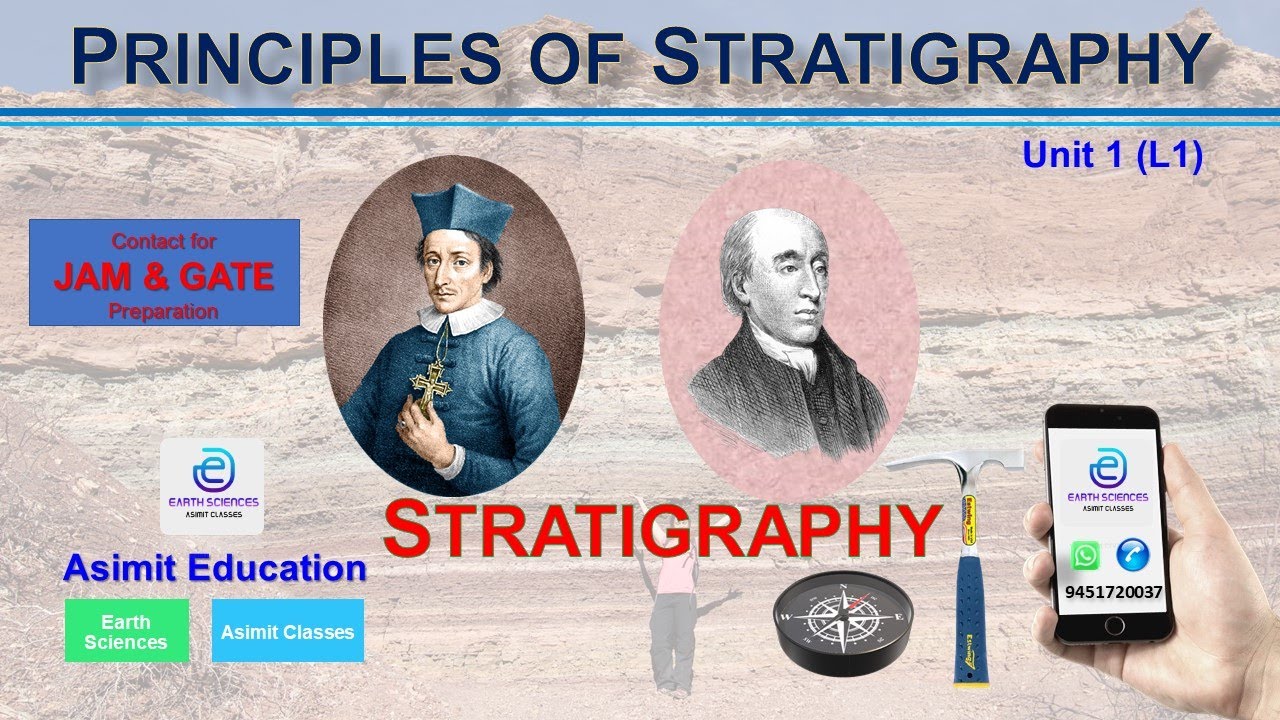MFG1904 #07 Geokronologi - 4 Contoh Geokronologi Relatif
Summary
TLDRThis script discusses the application of relative geological principles, including superposition, original horizontality, and material continuity, through a case study. It explores concepts like angular and disconformities, intrusions, and erosion, emphasizing the importance of data interpretation in geology. The script also touches on faunal succession, using fossils to determine rock ages and illustrating geological time scales.
Takeaways
- 🪨 The discussion centers on applying principles of relative geology, such as superposition and cross-cutting, to geological case studies.
- 🌋 A sequence of rock formations is analyzed, including igneous rocks, sedimentary layers, intrusions, and subsequent lava flows.
- 📏 Superposition and original horizontality are applied to understand how sedimentary layers form from bottom to top.
- 🪓 The concept of cross-cutting is explained, where granite and later intrusions disrupt the existing rock layers.
- 🧗 Deformation and angular unconformities are introduced as a result of tectonic forces, followed by erosion.
- 🌊 Non-conformity and disconformity are highlighted, emphasizing how erosion creates gaps and how sedimentation resumes in marine environments.
- 👷 The final geological layer discussed includes human activity, with man-made structures adding to the geological sequence.
- 🧭 An example of a faulted and deformed geological sequence is explored, where superposition and cross-cutting reveal the relative age of rock layers.
- 🦖 Fossil succession is used to determine the relative ages of rock layers, from trilobites in the Cambrian to later periods like the Ordovician and Silurian.
- ⏳ The discussion concludes with a shift towards absolute dating, moving beyond relative dating principles to more precise geochronological methods.
Q & A
What are the principles of relative geology mentioned in the script?
-The script discusses principles such as superposition, original horizontality, material continuity, the principle of cross-cutting relationships, the principle of included fragments, and the principle of faunal succession.
How does the script describe the process of sedimentation in the context of geological study?
-The script explains sedimentation as a process where layers of sediments are deposited in a sequence from bottom to top, with the oldest layers at the bottom and the youngest at the top.
What is the significance of the granite intrusion mentioned in the script?
-The granite intrusion signifies the principle of cross-cutting relationships, where the granite cuts across the sedimentary layers, indicating that the intrusion event occurred after the sedimentation of those layers.
How does the script explain the concept of angular unconformity?
-Angular unconformity is explained as a geological feature where older, tilted rock layers are overlain by younger, horizontal layers, indicating a period of deformation and erosion before new sedimentation occurred.
What does the script imply about the environment during the erosion phase described?
-The script suggests that erosion typically occurs on land, as it mentions the formation of a land surface due to erosion, which is then covered by marine sediments.
How does the script relate the presence of fossils to the determination of geological time periods?
-The script uses the presence of fossils such as trilobites, corals, and brachiopods to determine the age of the sedimentary layers, as these fossils are indicative of specific geological time periods like the Cambrian, Ordovician, and Silurian.
What is the principle of faunal succession, and how is it applied in the script?
-The principle of faunal succession states that different groups of organisms appear and disappear in a definite order in the geological record. The script applies this principle by identifying fossils and correlating them with specific time periods.
How does the script differentiate between disconformity and nonconformity?
-The script differentiates between disconformity and nonconformity by describing disconformity as a break in the rock record where both underlying and overlying rocks are parallel, while nonconformity involves a break where the underlying rocks are deformed and the overlying rocks are not.
What does the script suggest about the limitations of geological interpretation?
-The script implies that geological interpretation is highly dependent on the available data and that different perspectives or data sets can lead to different interpretations of geological events.
How does the script discuss the impact of human activity on geological processes?
-The script mentions human activity as the final process in the geological sequence, indicating that human-made structures and activities such as building and road construction are part of the most recent geological changes.
What is the purpose of the animation mentioned in the script?
-The animation is used to illustrate the principles of relative geology, including the sequence of geological events and the relationships between different rock layers and structures.
Outlines

このセクションは有料ユーザー限定です。 アクセスするには、アップグレードをお願いします。
今すぐアップグレードMindmap

このセクションは有料ユーザー限定です。 アクセスするには、アップグレードをお願いします。
今すぐアップグレードKeywords

このセクションは有料ユーザー限定です。 アクセスするには、アップグレードをお願いします。
今すぐアップグレードHighlights

このセクションは有料ユーザー限定です。 アクセスするには、アップグレードをお願いします。
今すぐアップグレードTranscripts

このセクションは有料ユーザー限定です。 アクセスするには、アップグレードをお願いします。
今すぐアップグレード関連動画をさらに表示

Principles of Stratigraphy (STRATIGRAPHY- U1 L1) #STRATIGRAPHY #GATE #JAM #CSIR #NET #GEOLOGY

Relative and Absolute Dating | Earth and Life Science

Principles of Stratigraphy and Cross-Cutting Relationships

EARTH AND LIFE SCIENCE - Formation of Rock Layers

Methods of Dating the Earth Part 1: Relative Dating

GEOLOGI DASAR: LIMA HUKUM DASAR GEOLOGI - Video Kuliah Pembelajaran Daring Kolaboratif
5.0 / 5 (0 votes)
